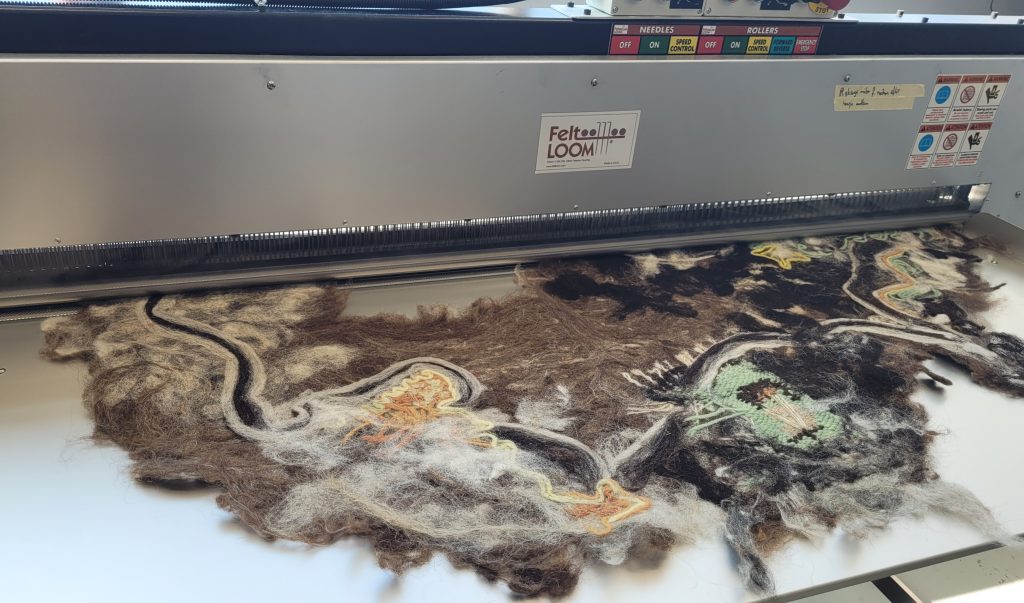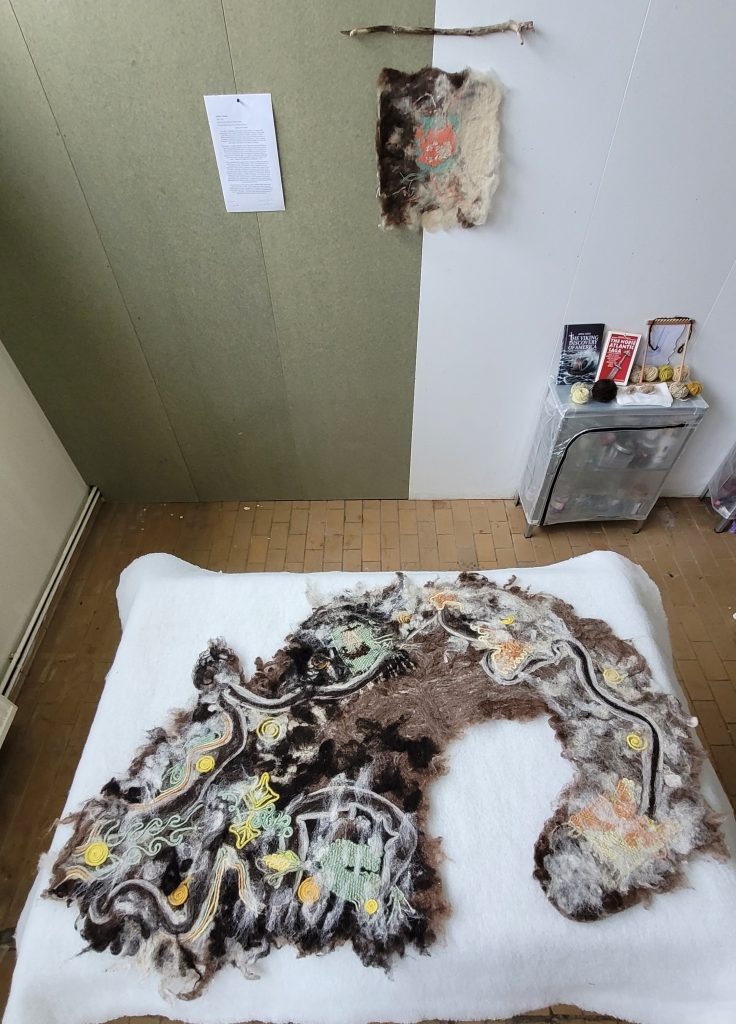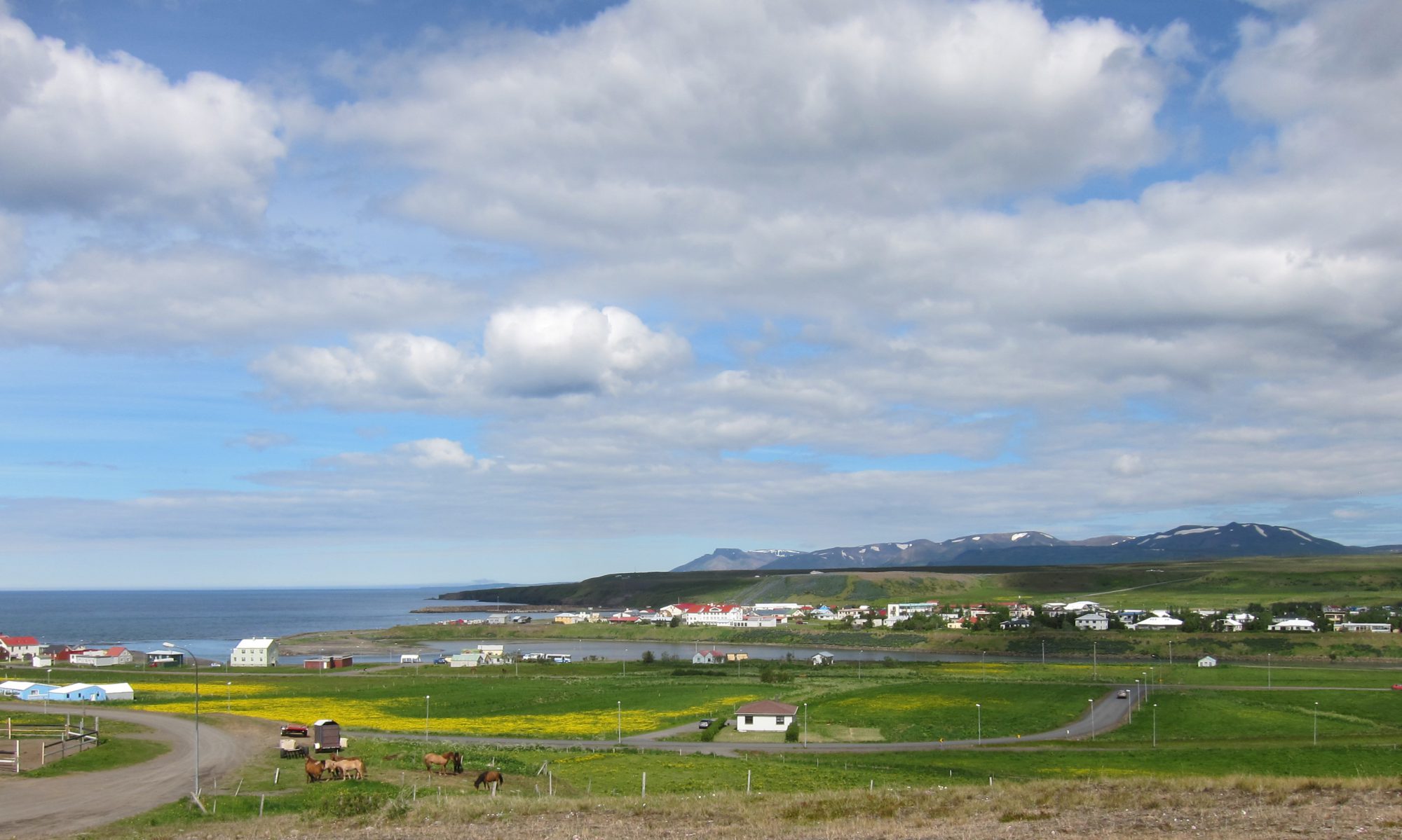Van Randall

This field school for Concordia students is meant to have a feel of an artist residency but it being a university course open to all educational levels we are tasked with reflecting upon the phenomenon of “artist as tourist”.
Prior to the trip to Iceland, we reflected together on what it means to be an artist in a time of environmental degradation and climate change by humans. Although tourism may provide an economic boost, it is often perspective which treats the natural world as backdrops for human experience rather inviting care and concern for the local cultures and ecological which make the place worth visiting in order to remain self-sustaining.
As artists who are working from a place-based lens, I found we take direction from the subject and materials of the place we work. For example, a place-based practice might look like, as we learned in the workshop on natural dying and spinning, making pigments from sustainably foraged plants or buying wool from the local farmer to spin.
When foraging for plants we chose plants which are invasive such as the Alaskan Lupin here in Iceland and follow a 10% responsible foraging rule. Lupins brought a nice blue-green, Northern Dock = highlighter yellow and Rhubarb mustard yellow. All which we modified with iron and soda for different variations. See colors below.
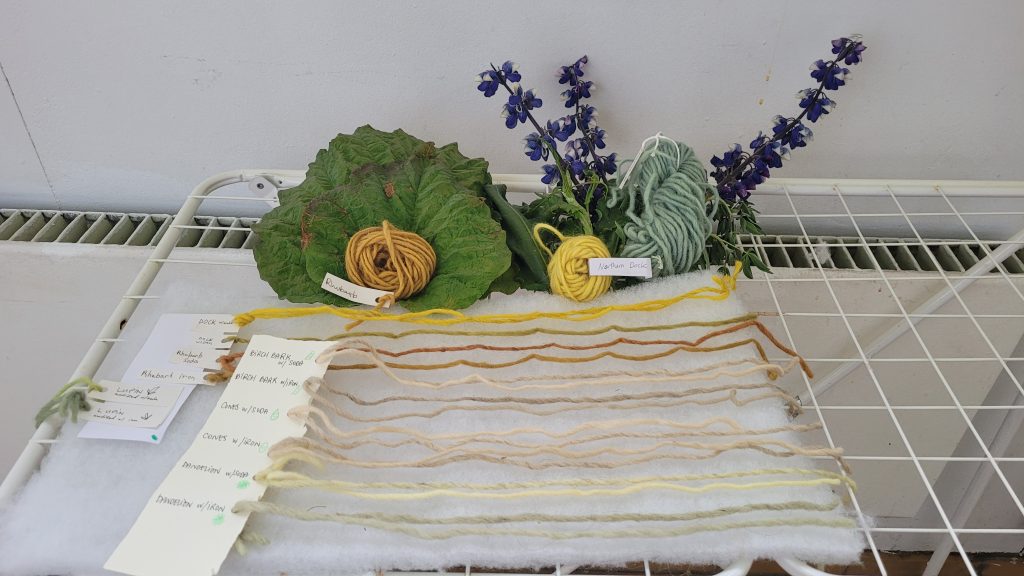
In the final work for the IFS, I was thinking about how I could make a map which reflected the feeling of a place which would grow out of my experiences here. In my Geography course this past fall I learned about “story maps” and other alternative kinds of map-making often taken up by artists interested in the power of the map. I knew I wanted to make this map out of a spotted brown and white sheep wool, from Nova Scotia when I helped assist a farmer on shearing day.
While in Akureyri for an afternoon ( the most far northern city in Iceland), I found a book called: The Viking Discovery of North America by Anna Yates. It is a rigourous but non-academic style text whose subtitle I prefer: “The Story of Leifur Eiriksson and Vinland the Good”. I found another book, The Norse Atlantic Saga by Gwyn Jones, an older, heftier text, which I bought for the cool map illustrations, let’s be real. ( See below as part of art installation, in the dye shed.)
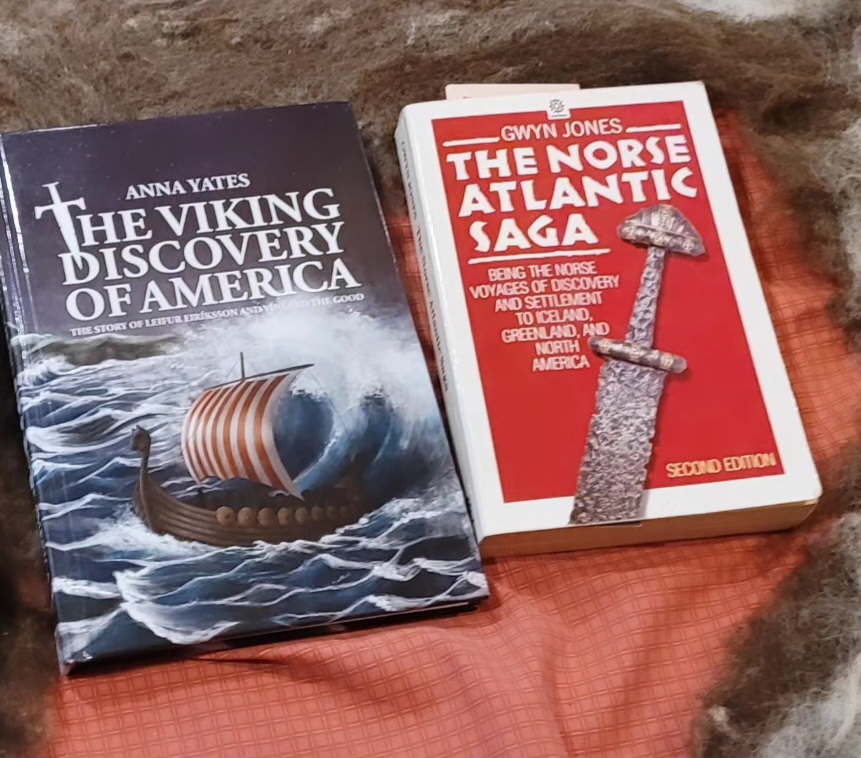
The former text inspired my final work here in Iceland and the ease of using the Felt Loom at the textile lab. The felt loom is a large diameter of 60 inches which is good news, since working the sample I found it is hard to keep the project small……. Once you pass the wool through several times the work has a tendency to grow and grow and suck up more and more wool. Thankfully earlier that day, I visited the wool washery in town, and asked what they were planning to do with the wool discarded on the floor which had already been washed. It was wool that had been felted and stuck on the rolls so its destiny was garbage! This additional bagful of brown wool made it possible for me to enjoy creative freedom with the size of the piece, balancing out the white and black Icelandic wool I had copious amounts of from a local sheep farmer and spinning instructor- extraordinaire, Johanna.

What started out as a modest half circle, grew into a giant Icelandic sheep horn! Another surprise was how well this shape wrapped around my body.
Textiles are beautiful as well as offering other potentials a soft, gentle and flexible and protective medium. An oil painting wouldn’t keep you warm in Iceland, unless you set fire to it and that’s only a temporary solution, not a sustainable one.
